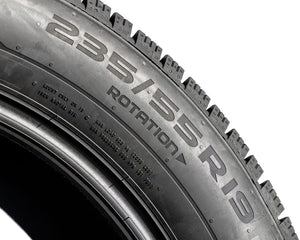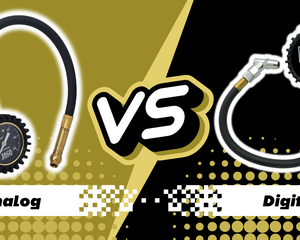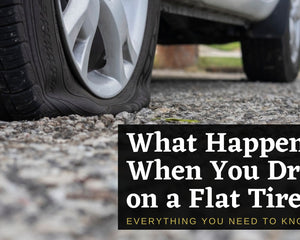Mountain biking is a sport that puts a lot of stress on your tires. You are riding over rough terrain, rocks, roots, and possibly through snow and mud. All of this can cause your mountain bike tires to lose air pressure. If you don't keep an eye on your mountain bike tire pressure, you could end up with flats or even blowouts.
Maintaining the correct mountain bike tire pressure is essential for both the health of your tires and the performance of your mountain bike. In this article, we will discuss why it is so important to check your mountain bike tire pressure regularly and what pressures are best for different types of terrain.

Why mountain bike tire pressure is important
We all know that mountain biking is a great way to get outdoors and enjoy some exercise, but it's important to make sure your bike is in good working order before hitting the trails. One routine maintenance task that is often overlooked is checking the tire pressure. This is especially important for mountain bikes, as the tires have to be able to withstand a lot of wear and tear.
The ideal tire pressure will vary depending on the terrain you'll be riding on, but as a general rule, you want the tires to be firm but not rock hard. If the pressure is too low, the tires will be more likely to puncture or get damaged; if it's too high, the ride will be uncomfortable and you risk damaging the rims. Checking your mountain bike's tire pressure regularly will help you avoid flats and other problems, so make it part of your regular maintenance routine.
Properly Inflated Bike Tires Enjoy a Longer Life
Another reason it is important to maintain proper mountain bike tire pressure is that it can help lengthen the life of your tires. If the pressure is too low, the tires will be more likely to puncture or get damaged; if it's too high, the ride will be uncomfortable and you risk damaging the rims. Checking your mountain bike's tire pressure regularly will help you avoid flats and other problems, so make it part of your regular maintenance routine.

How mountain bike tire pressure affects performance
The pressure of a mountain bike's tires has a big impact on the bike's performance. Too much pressure and the bike will be hard to control and will bounce off the ground; too little pressure and the bike will be sluggish and may get stuck in mud or sand. The ideal tire pressure for a mountain bike depends on the terrain, the rider's weight, and the type of bike. A cross-country bike, for example, will perform best with lower pressure than a downhill bike.
Riders should experiment to find the perfect tire pressure for their conditions. A good rule of thumb is that the pressure should be high enough to avoid pinch flats (when the tire gets pinched between the ground and the rim) but low enough to provide traction and comfort. By paying attention to tire pressure, mountain bikers can make sure they're getting the most out of their bikes.
How to check mountain bike tire pressure

Every mountain biker knows that proper tire pressure is essential for a good ride. Too much pressure and the bike will bounce over every bump; too little pressure and the bike will feel sluggish and slow. Fortunately, checking tire pressure is quick and easy, and only takes a few minutes.
First, use an accurate bike tire pressure gauge to check the pressure of both tires. The ideal pressure will vary depending on the type of terrain you'll be riding on, so it's a good idea to consult your bike's owner's manual. Once you've checked the pressure, use a floor pump to add or release air as needed. If you don't have a floor pump, a hand pump will work in a pinch, although it will take longer. With just a few minutes of effort, you can ensure that your tires are at the perfect pressure for a great ride.
What mountain bike tire pressure is best for different terrain
Depending on the type of terrain you're riding on, you'll want to adjust your tire pressure accordingly. For example, if you're riding on soft terrain like sand or mud, you'll want to lower your tire pressure so that your tires have more contact with the ground and can better grip the surface. This will help you to avoid getting stuck or losing traction.
On the other hand, if you're riding on hardpacked trails or paved roads, you'll want to increase your tire pressure. This will minimize rolling resistance and help you to go faster. You'll also want to be careful not to put too much pressure in your tires, as this could cause them to blow out. Ultimately, it's important to experiment and find the tire pressure that works best for you and the terrain you're riding on.
Final Thoughts
Maintaining mountain bike tire pressure is essential for a good ride. By checking the pressure regularly and adjusting it as needed, you can make sure that your tires are performing at their best. Depending on the terrain you're riding on, you'll want to adjust the pressure to ensure maximum traction and control. Remember to experiment until you find the perfect setting for you and your mountain bike!
TLDR;
- Mountain bike tires should be at the correct pressure for the terrain to avoid flats and improve performance
- Checking mountain bike tire pressure is easy and only takes a few minutes
- Improper tire pressure can cause a mountain bike to perform poorly
- Find the right tire pressure for each type of terrain




